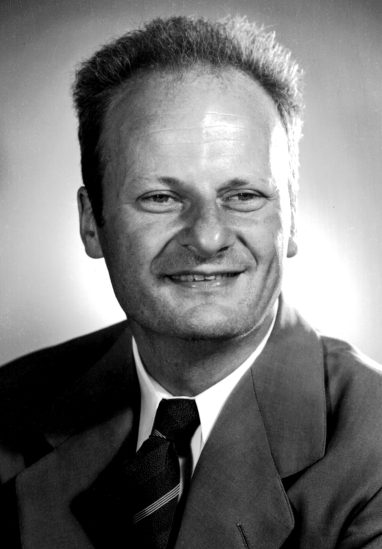Hans Bethe (1906-2005) was a German and American nuclear physicist and winner of the 1967 Nobel Prize winner in Physics.
Bethe was selected by J. Robert Oppenheimer to lead the T (theoretical) Division at Los Alamos during the Manhattan Project. As theory chief, Bethe worked on some of the most difficult problems related to the atomic bomb, including calculating the critical mass and efficiency of uranium-235 and the multiplication of nuclear fission in an exploding atomic bomb. In 1944, he and Richard Feynman developed a formula for calculating the bomb’s explosive yield. Later that year, Bethe began collaborating with physicist Charles Critchfield to design the neutron initiator for the implosion bomb.
After the war, Bethe returned to Cornell to resume his teaching career. During the 1950s, he returned to Los Alamos to help build the hydrogen bomb, even though he remained opposed to its development. Between 1956 and 1964, Bethe served on the President’s Science Advisory Committee, and in 1958 he headed a presidential study of nuclear disarmament.
Bethe helped to negotiate the 1963 Limited Test Ban Treaty with the Soviet Union, and acted as an informal advisor to Presidents Eisenhower, Kennedy, and Johnson. In his later life, he campaigned against President Ronald Reagan’s proposed Strategic Defense Initiative missile system and advocated for the peaceful use of nuclear energy.




